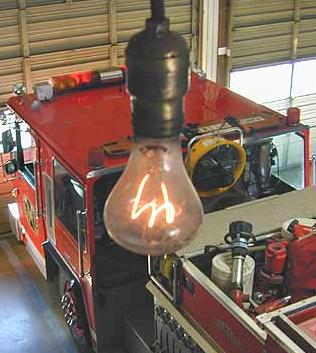At the behest of the green gestapo, Canada is set to ban the incandescent light bulb in 2012. The only problem is that, as often happens when the government meddles in things it shouldn’t, the result is likely to backfire and increase pollution not reduce it – mercury pollution in this case.
From here:
The Canadian government’s new energy-efficiency rules for light bulbs are fast approaching implementation, but no national standards exist to deal with the toxic waste they are expected to create.
The federal government admits the patchwork of regulations for disposing of compact fluorescent bulbs, or CFLs, is one of the unintended consequences of rushing in the new energy-efficiency regulations.
Environment Minister Peter Kent said he was surprised to hear from CBC News that the provinces — which are responsible for setting garbage disposal regulations — were at different levels of preparation for the new light-bulb regulations, which begin Jan. 1, 2012.
Traditional incandescent bulbs won’t meet the energy-saving rules. Kent said a national technical group is working out a system for recycling the mercury-containing bulbs that consumers will buy instead.
“If you’re finding a patchwork of understanding, I’ll make sure that we issue communications to my provincial colleagues and suggest that they come up to speed,” Kent said.
But experts in mercury pollution and recycling say they are unimpressed, and they worry the mercury will end up in municipal garbage dumps.
“They don’t really have a plan,” said Dana Silk, the general manager of Envirocentre, an Ottawa non-profit organization that works to reduce greenhouse gas emissions by delivering energy-efficiency goods and services.
Even worse is the fate suffered by the poor suckers who make CFLs:
From here:
WHEN British consumers are compelled to buy energy-efficient lightbulbs from 2012, they will save up to 5m tons of carbon dioxide a year from being pumped into the atmosphere. In China, however, a heavy environmental price is being paid for the production of “green” lightbulbs in cost-cutting factories.
Large numbers of Chinese workers have been poisoned by mercury, which forms part of the compact fluorescent lightbulbs. A surge in foreign demand, set off by a European Union directive making these bulbs compulsory within three years, has also led to the reopening of mercury mines that have ruined the environment.
The longest lasting light bulb in existence is an incandescent one: the Centennial incandescent light which has been burning for 109 years. The only thing that could put it out is the government.



Is it just my bad luck, or has anyone else noticed that these new light bulbs don’t last anywhere near as long as the old ones?
Also, wondering how many of the burnt out new bulbs are being “properly” disposed of, and how many are just going straight into the trash?
I do notice that the advertised long life of CFL bulbs doesn’t seem to happen in the real world. Some seem to last well, others not so.
OTOH, the Canadian Association of Wheelwrights and Buggy-Whip Manufacturers endorses your position.
Henry We ran an early model for about three years before we moved. It was never shut off. I don’t see what the fuss is. In the long run LED lamps will replace both. LED have a longer life and negligible disposal side effects since they are encapsulated in plastic. My major objection is the low output and colour temperature but that will be resolved in time and as price comes down they will become more popular. Typically they are rated at 5 years but I have equipment with LED going back to the late 60’s when they were introduced. (A TI calculator)
This chart will be of interest
http://www.designrecycleinc.com/led%20comp%20chart.html
And the technical gobblygook
http://en.wikipedia.org/wiki/Light-emitting_diode
Steve,
Agreed, LED lights are the best option. I have a couple of flash-lights with high output Cree LEDs in them and they put out around 170 lumens from 3 aaa batteries consuming < 3 watts.
The L Prize competition will substantially accelerate America’s shift from inefficient, dated lighting products to innovative, high-performance products. Just as Thomas Edison transformed illumination over a century ago, the L Prize will drive innovation and market adoption.
Sponsored by the U.S. Department of Energy, the L Prize is the first government-sponsored technology competition designed to spur lighting manufacturers to develop high-quality, high-efficiency solid-state lighting products to replace the common light bulb.
The goal is to have a 10 Watt solid state replacement for the 60 Watt lamp, the most common lamp sold. The other candidate is for the PAR38 flood light. The winner gets a U$ Government $upply contract. And of course the carbon-footprint mumbo jumbo is part of all this.
http://www.lightingprize.org/